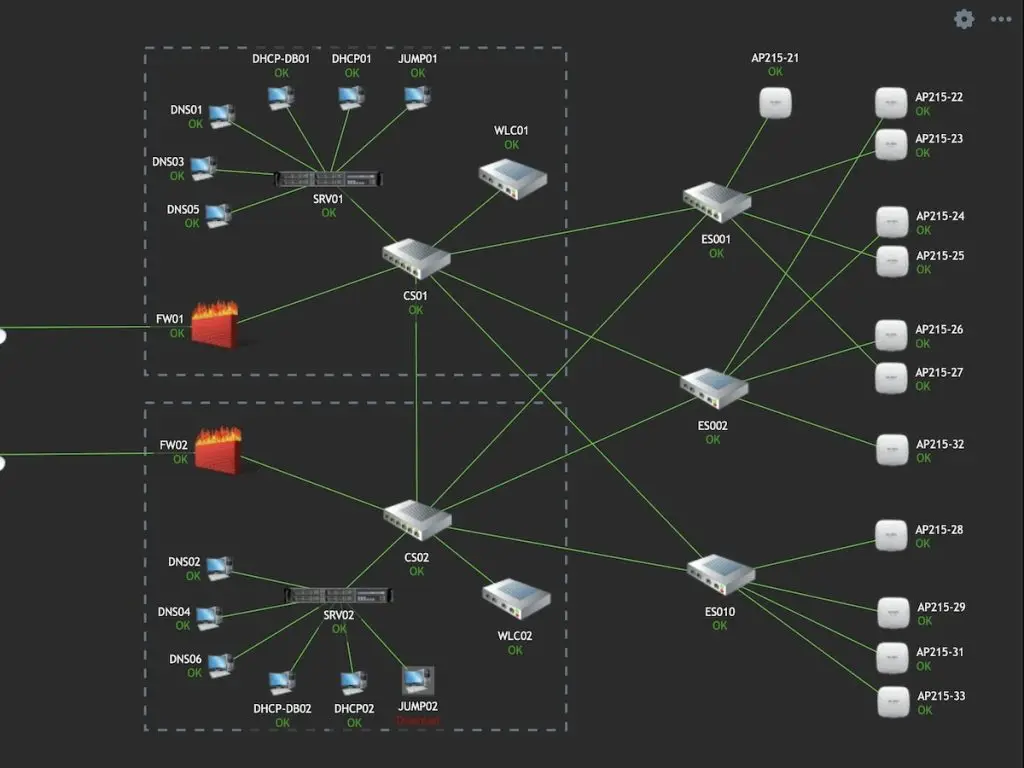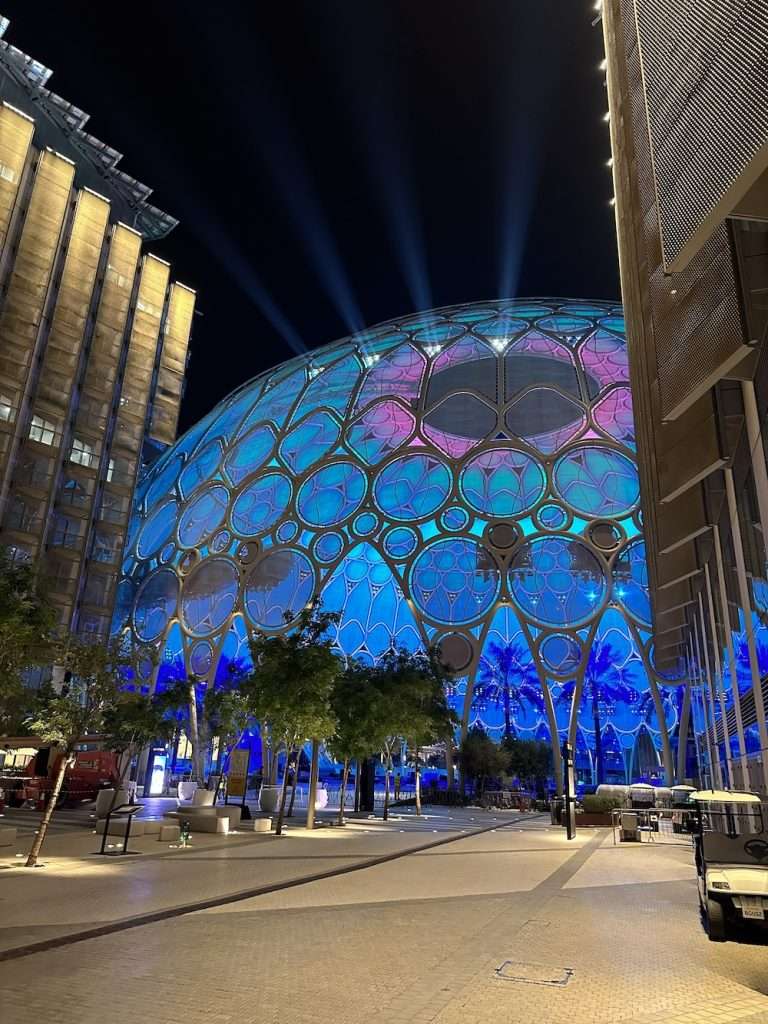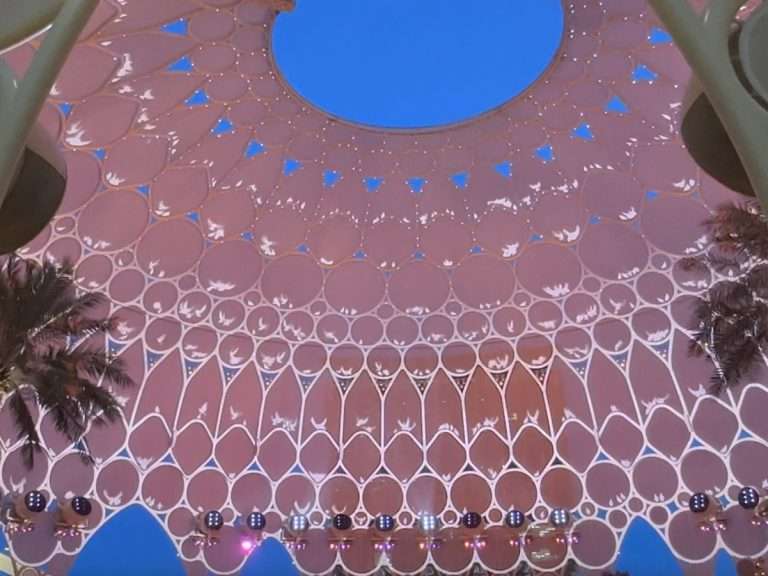The events and conferencing market in the UK was worth £34.3 billion in 2023, which brings it almost back to pre-pandemic levels. Business events alone contributed £10.9 billion of this, taking nearly a third of the market value.
Despite its setback from the Covid pandemic, the outlook is bright for the events market and sustained market growth is anticipated to 2028. There is a strong consumer demand for live events, with new events emerging in the wake of old ones folding.
And we’re seeing big investment in innovation from companies competing to bring new ideas and technologies to the events market.
Here we cover some of the main technology trends for events in 2025.
WiFi
Connectivity is increasingly important. The key takeaway from 2024 is that in 2025 high availability will be key for those that rely on connectivity. High availability networks are designed to keep your event site online should the worst happen – a hardware failure, broken cable, satellite interruption for example.
High availability event WiFi solutions are built to varying degrees of resilience. At the very top level, you will have 2 (or more) internet connections, 2 (or more) fibres connecting every piece of edge hardware to the core, 2 (or more) network cores and enough access points to make sure key zones are covered should one fail. You can see a typical high availability network design below.

Guaranteed connectivity is a huge benefit when it comes to supporting your event technology, which will connect into your WiFi network – if it is built to a high enough standard.
In 2024 we saw many events struggle with connectivity that were running a WiFi network without high availability. Loss of revenue and heightened stress were reported as the biggest impacts.
Data analytics
Data analytics is going to be big in 2025. And we’re not just talking about the data that attendees provide when registering for an event. We’re talking about live event data, that’s captured during the event itself. There are technologies spilling onto the market that can provide huge amounts of data that can be utilised by operations, marketing and sales teams to drive revenue and improve event experiences. Here are some examples:
People counting
Ever wonder how many people visit specific zones at your event? Would it help your sales team to sell trade stands if they can justify the traffic to each area? Perhaps your event layout could do with some adjustments to even out the crowds for a better experience. People counting is a great way of achieving this data.
There are a few ways of doing this. We recommend using camera/sensor technology rather than beacon and WiFi technology. Beacons work by gathering data from our smartphone, typically from your device’s MAC addresses. Because your device will request a new MAC address each time, beacon technology often leads to overcounting and inaccurate data.
Sensors on the other hand work on tracking physical movement and are therefore much more accurate.
Cameras can also track gender and age to 90% accuracy, and exclude staff tracking to make your data event detailed and more accurate.
The technology is improving and it can provide excellent intelligence to event organisers and traders.
Heat maps
Heat maps provide traders and event producers with more detailed insights into points of interest at events. This could be where displays or specific promotions are happening. They can be used to optimise product placement and drive revenue, and show the reach of specific activations.
Event tools
Advancements in event management platforms means that the wealth of data captured from a conference or event is better than ever. With live engagement via online apps, the data analysis from live event engagement can provide you with useful insights.
Security and Martyn’s Law
Martyn’s law is a hot topic on event organisers’ lips. It promotes better protection against terrorism, particularly at large public events. It’s something that every public event should take heed of, and 2025 will see better security as a result of Martyn’s Law.
CCTV
CCTV cameras, connected over the WiFi, can cover every angle of every event site, ensuring 24-hour surveillance without blind spots.
A great deterrent, they are a cost-effective method of protecting your event site, and we expect to see more of them utilised in 2025. The use of CCTV reduces the need for physical security, which in turn reduces resource cost, but requires a good strategy for training and monitoring.
Sales and Marketing technologies
2025 will see more advanced event sales and marketing technology, aimed at driving revenues to a market where profit margins can be tight. Here, the WiFi network opens up huge potential for in-event promotions and data capture.
Captive portals
Captive portals allow WiFi sponsors to capture data from live event attendees as they log onto the guest network. By capturing data such as email addresses, interests and other demographics, they can be retargeted with promotions and post-event communications.
Splash pages
Splash pages are using deep links to direct users to specific areas within event apps. This can be taken further by combining the deep links with data captures via the captive portal for responsive user journeys.
In-event promotion
WiFi splash pages can be used to promote event specific offers and giveaways sending traffic to your stand.
Digital signage around the event can be sold as advertising space to send messages out to the entire event audience. Sponsorship is evolving beyond traditional lanyards and leaflets to more immersive displays. And with it comes more revenue opportunity for event organisers.
Immersive experiences
Immersive event experiences will be taken to new heights in 2025. We’ve already seen some incredible ways that technologies have been used to immerse us into brand culture.
Projected display technology
Our ability to change any space with projected graphics means that we can now promote our brands everywhere. And we expect this to only get bigger and better in 2025. Great examples of this are the Nissan Formula E racing helmet and Cop 28’s immersive walkways as you enter the event to show how event experiences can be elevated to new levels. Creativity that awakens the senses – sound, sight, smell, touch and taste will help brands to stand apart in 2025. World Expos are becoming fully immersive event cities, built with projected displays all around to fully immerse the attendees in the vision of the world leaders.

AR, VR and wearable technology
This technology will continue to evolve, although with the development of fully immersive event venues, which allow users to interact with each other whilst enjoying the experience, we can’t help but wonder whether its adoption will be limited.
With AI focussing on automation of content, social posts and marketing activities, we feel AI runs the danger of increasing the amount of lower quality, higher volume noise, diluting the really clever immersive technologies being developed. It waits to be seen.
Event personalisation moves face to face
With modern data collection techniques, and the rise of virtual events during lockdown, we are seeing more personalised event experiences delivered though the use of devices. Tailored sessions, breakout rooms and engagement via gamification.
But these are now moving to support in-person events which have seen a strong come-back.
RX launched ‘smart events’ to make the in-person experience more interactive. by providing exhibitors a set of digital tools they are improving exhibitors’ ability to attract people to their stands, capture and analyse data.
In 2025 we expect these interactions to move beyond personal devices, to shared event spaces – on screens, in live rooms and immersive event areas. In effect, bridging the gap to make personalisation an in-person rather than device led experience.
Cashless and contactless
Already heading in this direction in 2024, we expect more events to adopt a contactless and cashless approach. This streamlines the revenue process and allows better reporting and analysis of growth and product trends. High availability networks will help ensure that payments aren’t lost and revenue can be maximised.
Technologies such as wristbands can speed up the payment process by using a central payment method rather than traders taking individual payments.
Where good connectivity has been proven to increase revenues by up to 30%, a central payment method could take this even further.
Summary
We look forward to more exciting developments for event technology in 2025. More immersive experiences, better security and use of data to drive marketing initiatives that will grow event revenue, the key to innovation lies in the WiFi network they run from. High availability is the key, to create a stable backbone for our event technology.
If you’d like to talk about these solutions, get in touch at info@wireless.solutions.

